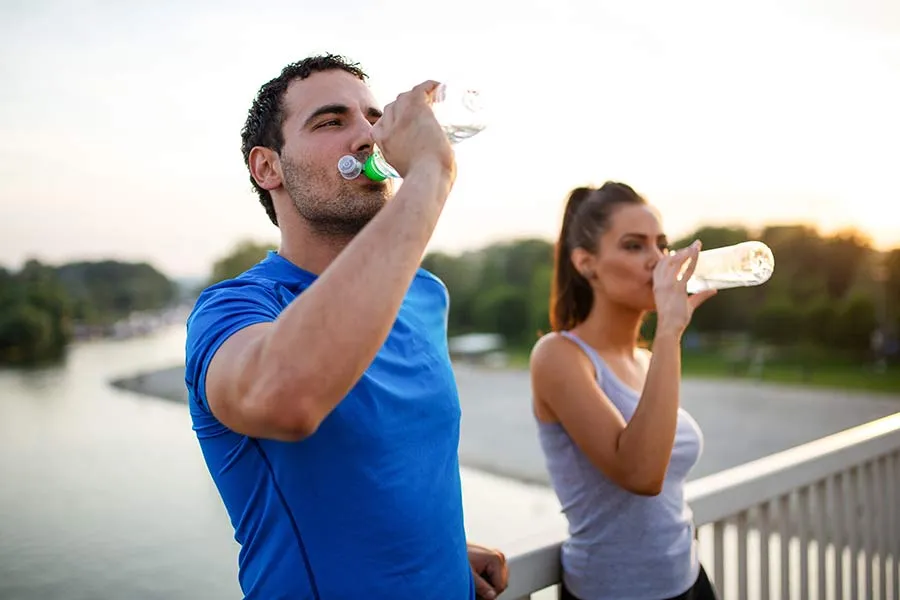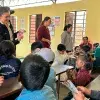The heat waves occurring in different regions of the world pose wellness challenges, such as taking care to avoid heat stroke.
Due to this situation, doctors at TecSalud stress that it is important to take measures to protect ourselves and take special care with the elderly, children, and even our pets.
“High temperatures like the ones we’re experiencing now can cause a variety of health problems, from mild discomfort to life-threatening conditions,” says Dr. Mauricio Gleenie, a specialist in internal medicine.
“Taking care of ourselves during a heat wave isn’t just a matter of comfort, it’s also a crucial step in protecting our health and wellbeing,” he adds.
In addition to Dr. Gleenie, Dr. Francisco García, Dr. Francisco Marentes, and Dr. Rocío Robles explain the following to CONECTA:
- Heat stroke: What it is and what the symptoms are
- What to do in the event of heat stroke
- Recommendations for avoiding heat stroke
- Also take care of your pets during high temperatures

Heat stroke: What it is and what the symptoms are
Experts such as Dr. Francisco García, specialist in Sports Medicine, say that heat stroke arises as a result of prolonged exposure to high temperatures.
This causes a significant increase in body temperature, which is classified specifically as heat stroke when body temperature reaches or exceeds 40°C (104°F).
When heat stroke occurs, the body’s thermo-regulatory mechanisms no longer function properly, preventing the body from restoring normal temperature.
We can recognize heat stroke from the following symptoms:
- Elevated body temperature
A core body temperature of 40°C or higher, measured with a rectal thermometer, is the main sign of heat stroke.
- Change in mental state or behavior
Heat stroke can cause confusion, agitation, slurred speech, irritability, delirium, convulsions, and coma.
- Change in sweating
Skin will feel warm and dry to the touch.
However, in heat stroke caused by strenuous exercise, the skin may feel dry or slightly moist.
- Nausea and vomiting
You may feel sick to your stomach or even vomit.
- Reddened skin
Skin may redden as body temperature rises.
- Accelerated breathing
Breathing may become rapid and shallow.
- Accelerated heart rate
Your pulse may increase considerably because heat stress places an enormous load on the heart to help cool the body.
- Headache
You may feel throbbing in your head.
- “Honey” or “burnt orange” colored urine
This is a sign of dehydration. You need to drink plenty of water and electrolytes.

What to do in the event of heat stroke
If you or someone around you is suffering from heat stroke, it is crucial you act quickly and effectively to prevent serious complications and protect the health of the person affected.
“Heat stroke requires emergency treatment. If it isn’t treated in time, it can quickly damage the brain, heart, kidneys, and muscles,” warns Dr. Francisco Marentes, Director of Emergencies at TecSalud.
As soon as heat stroke is suspected, it is important you take immediate steps to cool the body and seek immediate medical attention.
While medical help is arriving, Dr. Marentes and Dr. García suggest the following:
1. Find a cool, well-ventilated, or shaded place for the person affected.
2. Check body temperature, either by using a thermometer or through other obvious methods.
3. Apply wet wipes to the body, focusing on the nape of the neck, armpits, and groin.
4. If possible, immerse the person in a tub of cold water.
5. If the person is conscious, give them small sips of water to keep them hydrated.
6. Remove unnecessary clothing to facilitate cooling of the body.

Recommendations for avoiding heat stroke
Dr. Rocío Robles, a family physician at Hospital San José, shares some tips that can be useful both during a heat wave and during this period of extreme heat.
- Clothing for hot weather
- § Wear loose-fitting, lightweight clothing. Wearing too much clothing or clothing that is too tight does not allow the body to cool properly.
- § Try Dry Fit clothing. This type of fabric allows for evaporation of sweat and cooling of the body.
- § If the temperature is higher than 37°C, wearing black clothing may allow better cooling.
- § If not, light and light-colored clothes are your best allies.
- § Do not overdress children, even if they are wearing light layers.
- § Use sunscreen, a hat or cap, and sunglasses when going outdoors.
- § Avoid carrying heavy backpacks or bags so you do not over-exert yourself physically.

- Recommended foods and beverages in hot weather
- § Drink at least 2 liters of water a day to stay hydrated.
- § Reduce consumption of drinks with a lot of sugar and alcoholic beverages.
- § Avoid eating foods that are not well cooked, as they can make you sick.
- § Carefully disinfect all fruits and vegetables to be consumed since bacteria grow more easily in warm weather.
- § Avoid eating street food, particularly fish and seafood, and very hot or heavy meals.
- § Choose to include more fresh fruits in your diet, such as watermelon, cucumbers, lemons, oranges, etc.

- Be careful when engaging in outdoor activities
- § Avoid prolonged exposure to the sun, especially from 11 a.m. to 3 p.m., which is when the temperature reaches its highest levels.
- § Try to stay in cool, ventilated, and shaded places.
- § If you are going to drive, ventilate the car before getting in, since it is normal for heat to accumulate inside during hot weather.
- § Avoid exercising directly under the sun and avoid strenuous exercise in a very hot environment.
- § Opt for medium- or low-intensity routines that you can do in ventilated indoor spaces.
“Taking care of ourselves during a heat wave is not just a matter of comfort, it’s a crucial step in protecting our health and wellbeing.” - Dr. Mauricio Gleenie, of TecSalud
Also take care of your pets during high temperatures
It is also crucial in this season that we do not neglect the welfare of our pets, since just like humans, animals can also suffer the adverse effects of extreme heat.
Some options to keep them fresh and care for them are:

- Give them enough water and provide them with shaded areas.
Make sure their water bowls are full and placed in shaded areas to prevent the water from getting too hot.
In addition, create shady areas in the garden or outdoors where they can shelter from the sun.
- Limit their outdoor activities
At this time of year, avoid walking your pets or engaging in strenuous activities during the hottest hours of the day since the pavement and sidewalks can get very hot and burn the sensitive pads on their paws.
Opt for walks in the early morning or late afternoon when temperatures are cooler.
- Never leave your pet in a parked vehicle
Leaving pets unattended in parked vehicles, even for a short period of time, can be fatal because the temperature inside a car can soar in a matter of minutes.
- Options for keeping your pet cool
Place wet towels or cooling mats down for them to lie on. You can also use pet-friendly cooling products or freeze some of their toys or snacks.
- Take care of your pet’s hygiene and cleanliness
Brushing their coat helps remove excess hair and prevent clumping, which can trap heat.
However, it is important to consult a veterinarian before shaving or trimming a pet since some breeds have a coat that acts as a natural insulator.
- Watch for signs of overheating:
These may include excessive panting, drooling, lethargy, vomiting, and difficulty breathing. If you observe any of these symptoms, move your pet to a cooler area, give it water, and seek veterinary assistance if necessary.
YOU’LL DEFINITELY ALSO WANT TO READ:





